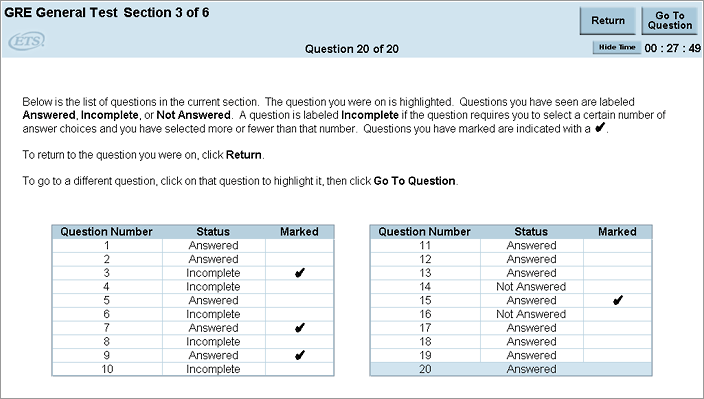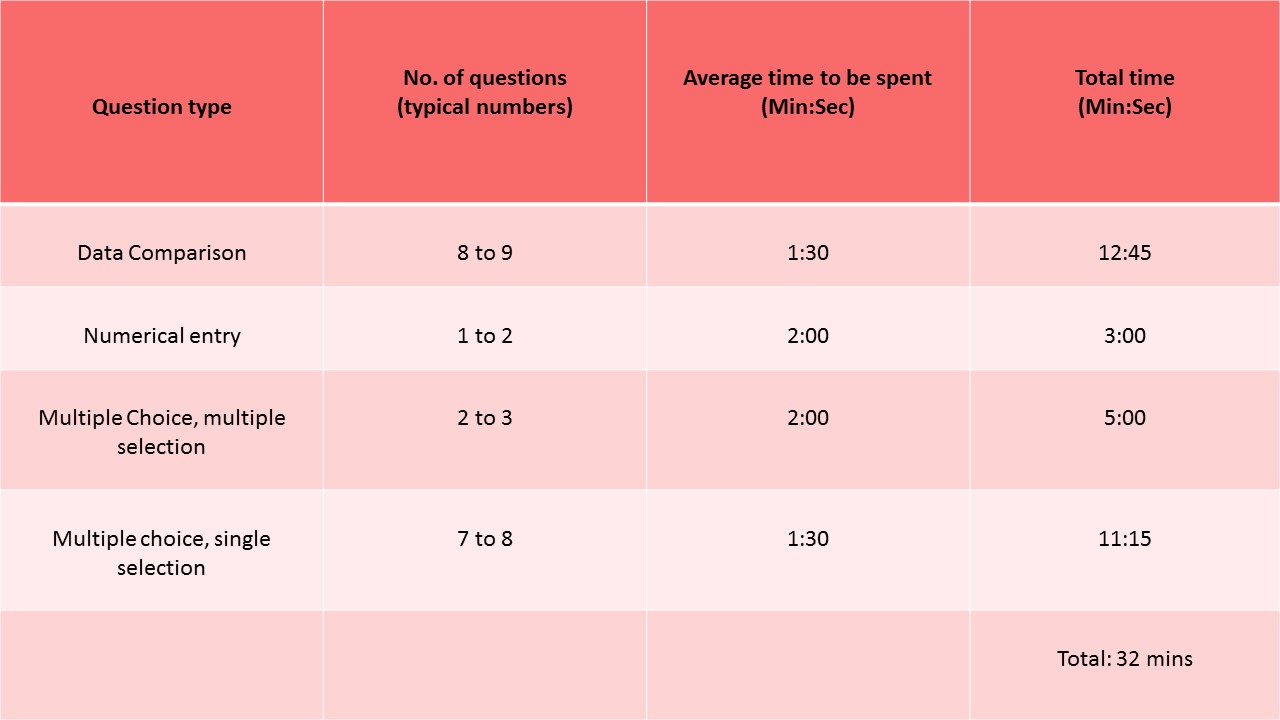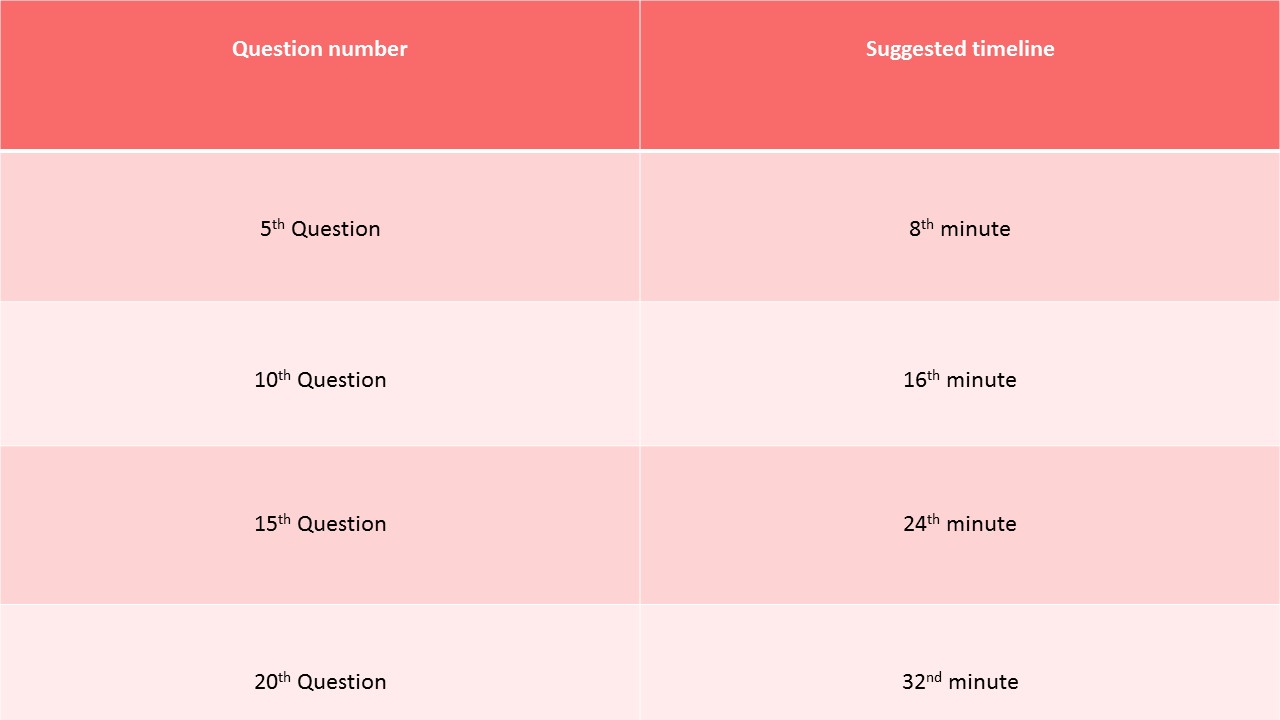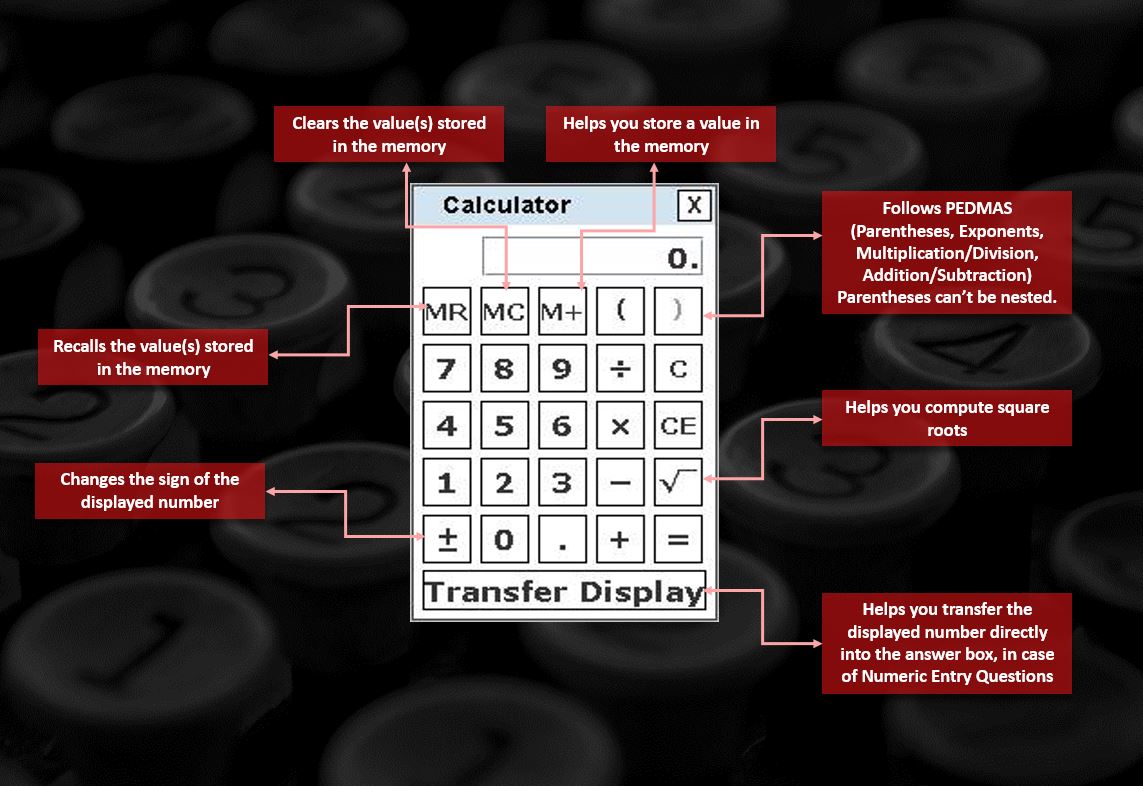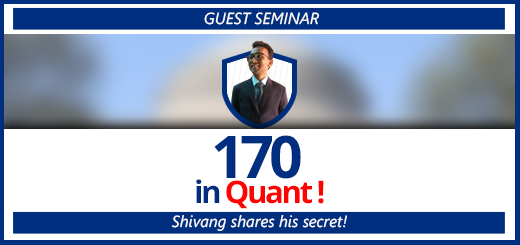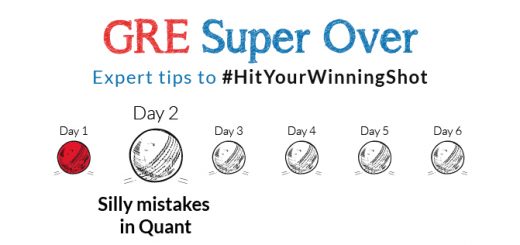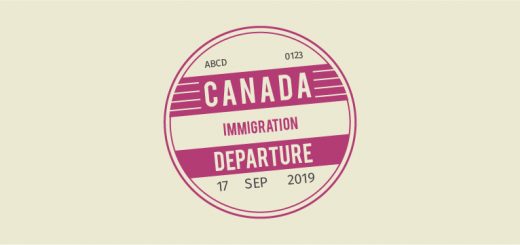7 ways to manage time in GRE Quant
GRE is a test of not only your analytical/verbal reasoning capabilities and general aptitude but also a test of how good you are at managing time and dealing with situations under pressure. None of it more evident than GRE Quant. With 40 questions to answer in 70 minutes (barring the chances that the experimental section is also a Quant one).
You need to:
- Keep your cool. Don’t get too worked up or frustrated when you can’t figure out the answer to one particular question.
- Have the right judgement to leave it in your first pass, move on to answer the rest of the questions and then come back and solve this question later on.
If you adamantly stick to one question, thinking you have to finish it before moving on to the next, you run the risk of messing up even the portions/sections that you know very well and end up scoring way below your expectations.
We understand that managing time might be difficult especially when you have the pressure of doing well in this exam at the back of your mind. But you need to understand that trying to hurrying up and haste will get you nowhere rather reduce your chance at getting top admits.
You certainly wouldn’t want that to happen, would you?
If the answer is an obvious NO, then check out the following tips that we have collected from personal trainers who have helped over 30,000 students score high in GRE. So, sit back, relax and take notes.
1. Allotting numbers to questions and neat rough work
Try to put question number and do your rough work neatly. Proper rough work is very useful as it can save you a lot of time when you go back to the unanswered question. If your rough work/calculations are spread all over the place, it will be difficult to locate them. Starting the calculations afresh mean you will end up spending more than 2 minutes and which is very unwise.
2. The IGMO method to save time
The IGMO method requires you to:
- Write all the questions in a piece of paper.
- Calculate the answers to the questions corresponding to the question number.
- If you are stuck on a question make an intelligent guess and move on
- Come back to the question later on and solve it.
Remember you shouldn’t spend more than 2 minutes on one question.
You can give an intelligent guess by eliminating the options that totally violate the given conditions. Revisit those questions in the end.
Are you up for some GRE Quant Quiz to see how much you’ve prepared and how well you manage time? Click here>>
3. Don’t leave questions unanswered
There is no negative marking in the GRE exam, so it is advisable to make a choice by intelligent guesswork rather than leaving a question unanswered. In a multiple choice question with one option to choose from four, your odds of getting it correct are 25%. So you have got nothing to loose. So answer all the questions. That doesn’t mean you will use rock-paper-scissors to decide the fate of the answers!
Our GRE experts have worked out the appropriate amount of time you can spend on the different types of questions. It is listed as below:
If you think there are only MCQs in GRE, you may be in a bit of surprise! Yes, there are different types of questions that appear in GRE Quant. Learn more>>
4. Spend less time on simple questions
Try to solve the simple questions in less time so that you can spend more time on questions of higher difficulty level and DI questions. Answering the questions that seem simpler will help you dedicate more time to questions that seem harder. Once you have practised hundreds of questions during GRE prep, you will intuitively know which one is difficult and which one is relatively simple. Besides, with ample practice comes this ability of recognizing questions of similar nature that you have solved before. This greatly increases your speed.
The difficulty level of questions vary from 1 to 5. The level 1 and 2 questions can be should be answered in 30-60 seconds.
To give you a brief idea about the difficulty level, here are some questions with their answers:
Question 1
Question Type: Data Comparison
Difficulty Level: Level 2
ABC is a triangle right angled at A. Angle ABC and angle ACB is y° and z°, respectively.
x° is an exterior angle at point B of the triangle.
Quantity A: x
Quantity B: z
Options:
Quantity A is greater
Quantity B is greater
The two quantities are equal
The relationship cannot be determined from the information given.
Answer:
Quantity A is greater
Explanation:
Given, ABC is a triangle right angled at A.
Angle ABC and angle ACB is y° and z°, respectively.
=> y + z = 90°
=> z = 90 – y
x° is an exterior angle at point B of the triangle
=> x + y = 180°
=> x = 180 – y
x = 90 + 90 – y
x = 90 + z
=> x > z
=> Quantity A is greater
Question 2
Question Type: Numerical Entry (No options required)
Difficulty Level: Level 3)
Set S contains the set of all non-negative integer n that is divisible by 6. If n < 100, what is the probability that a number chosen at random is divisible by 12?
Answer:
(9/17)
Explanation:
S = {0, 6, 12, 18, …, 96} => n(S) = 17
Set of all numbers that are divisible by 12 = A = {0, 12, 24, 36, …, 96}
=> n(A) = 9 Required probability = 9/17
You should try and complete the exam in 30 minutes, which will allow you to go back and solve the unanswered questions in the last 5 minutes. You could even revise during those 5 minutes.
5. Use the on-screen calculator
It would consume more time for computing manually, so it’s better you take diagnostic tests and use the on-screen calculator as much as possible. Note that the calculator in GRE is a BODMAS calculator which operates a bit different from the normal hardware calculators. Try to perform all the simple calculations in your mind without wasting your time typing in the numbers and waiting for the result. Do get used to this calculator during your practice phase.
You should be familiar with the following functions, depicted:
6. Beware of the exam situation
Now you should understand that exam hall might not be the ideal test taking environment that you thought it would be. The A/C might be working a tad bit slower or faster, hence cooling at different rates which can make you uncomfortable. The invigilators might be a tad bit too harsh. Apart from all that there might be some ambient noises that interrupt your concentration while answering the questions. Make sure that you eat properly before going for the exams. The pantry/food court of the exam center might not be too far to go to in those 5 minutes of break available. You have to keep all these things in mind while you take mock/full-length tests at your home.
7. Take care of the background timer
While you’re taking GRE, you can’t carry your wrist watch along. So, the only way for you to keep track of time would be the time running in the background. Now, most test takers feel a great deal of difficulty in keeping up with the preset timer. So, you should ditch the trusty wrist watch and start using a stop watch to time your mock/full-length adaptive tests.
Now that you are aware about the 7 ways to manage your time in GRE Quant, you can read about 8 GRE Test Tips To Keep in Mind. These carefully assembled tips by experienced GRE trainers can help you get the most out of your GRE preparation Online.
What GRE Quant topics worry you? Let us know in the comments below.


